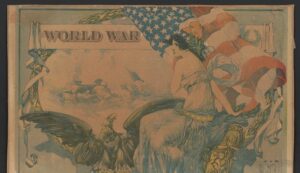Protesting the Louisiana Purchase
For most teachers and students of American history the decision seems like the no-brainer of all time. Napoleon of France was offering to sell the United States not just the city of New Orleans but the entire Louisiana territory, extending from the Southeastern frontier to the Pacific Northwest, for $15 million. Even strict constructionist Thomas Jefferson swallowed his constitutional objections and approved the purchase, announcing it on July 4, 1803 — the same day he commissioned Merriwether Lewis to lead an exploratory expedition of the new territory.
How could anyone, then or now, raise objections to doubling the size of the United States at such a bargain price? Many Federalists, however, did in fact oppose the Louisiana Purchase. Some were concerned about the constitutionality of the treaty with France. Others feared the impact of the purchase on the political balance of power between slave and free states. Some, like normally far-sighted Alexander Hamilton, claimed it was unnecessary; he predicted that the vast region west of the Mississippi River might not be inhabited for “centuries to come.”
I first learned of Federalists’ objections to the Louisiana Purchase when using one of the excellent lesson plans from the Stanford History Education Group’s Reading Like a Historian website. A free resource for U.S. history teachers, SHEG uses primary sources to teach students the historical thinking skills historians use to analyze and interpret events. With my regular ed students I typically used the SHEG lesson plan as written. I carefully developed the political context of the time with a short lecture and reminded the students of what they’d already learned about the intense partisanship in the early republic. I challenged my Honors and AP students to set the stage themselves by asking a series of questions designed to place the primary sources in a broader context. Regular ed students read the modified version of the primary sources provided by SHEG. Honors and AP read the originals. This approach ensured the differentiation necessary to engage students on their level.
This lesson became one of my favorites. It provided a broad variety of students challenging but approachable textual experience with primary sources. It had the added benefit of keeping them off balance. Almost all students predicted that no one would have opposed the Louisiana Purchase; but, after reading the primary documents, they quickly connected the partisanship of the age to the political tribalism of our own time. For the rest of the course, I could remind them of the lesson and encourage them to question an author’s assumptions as well as their own when evaluating primary documents.
The lesson uses an editorial by Alexander Hamilton published in the New York Evening Post on July 5, 1803 and brief excerpts of an exchange of letters between Rufus King and Thomas Pickering that same year. Using TAH’s Create Your Own Collection feature, you can adapt the lesson, combining these documents with others on the territorial fight over slavery, or the competing views of the first two political parties, or the competition between commercial and agrarian interests during the early republic. See what you can find to surprise your students!



